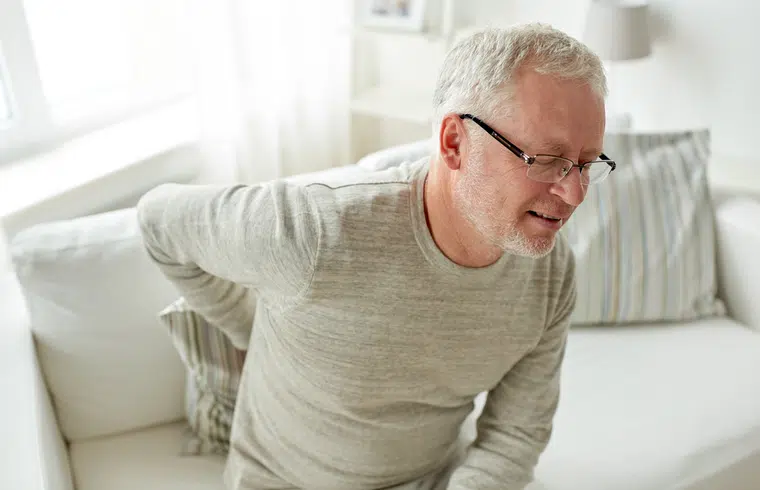What does the grocery store have to do with back pain? What shopping cart syndrome means for your spine.
Imagine you are grocery shopping. Ignore all the other shoppers; don’t worry about the employees stocking the shelves. I want you to imagine pushing the cart—what position are you in? How does your back feel in that moment?
“Shopping cart” refers to the idea that when you bend forward, as if supported by a shopping cart as you push it through the store, your back pain is temporarily relieved. But what is this a sign of?
What is the significance of shopping cart syndrome?
Shopping cart syndrome can be a sign that you’re developing spinal stenosis. It’s an ominous name, but spinal stenosis is a common condition that results in the narrowing of the spaces within the spine. This can cause compression on the nerves, resulting in symptoms like pain and numbness. When you hunch forward in the “shopping cart” position, it can temporarily flex the spine, creating more space and relieving pressure on those nerves. Talking with your medical provider about what doesn’t cause pain can be as important as what does, and give indications of the underlying cause of your back pain issues.
What are the symptoms of spinal stenosis?
The symptoms of spinal stenosis can also vary. One of the most common complaints is pain or cramping in one or both legs when you’ve been standing or walking for a length of time. Reports of numbness or a feeling of tingling down the leg or into the foot are also frequent. You’ll likely notice localized back pain, although it may not be as severe as the symptoms in your legs. And more severe, less common manifestations include trouble walking or issues with bladder control.
What causes spinal stenosis?
You can develop spinal stenosis a number of ways—it can be a congenital, heritable condition, or it can be caused acutely. If you’ve had any trauma that might result in a herniated or bulging disc, this can definitely tighten spaces in the spine and compress nerves. The development of arthritis as you age can also be a major contributing factor.
There are certain activities that can exacerbate the development of or aggravate existing spinal stenosis.
- Running or Extensive Walking
Running is high impact and can increase compression on the spinal nerves. Short walks are encouraged for spinal stenosis, but because extended periods of walking can lead to an increase in pain, you should be mindful of the duration of your walking. - Contact Sports
Sports like football, hockey, and martial arts can increase the likelihood of impact, injury, and inflammation of the spine. - Climbing
Rock climbing or similar activities can disrupt the natural alignment of your spine, further irritating compressed nerves. - Golf
A golf swing incorporates both compression and rotation of the spine, but there are ways to mitigate any damage from the sport. We’ll dive deeper into this in a springtime blog series on golf and spine health. - Pickleball
The game of pickleball requires players to move quickly in different positions, which can impact the spinal canal. Focusing on form by bending through the knees versus bending your spine to get at those low shots.
Diagnosis and treatment
A medical professional can diagnose spinal stenosis primarily through a history, physical examination, and as a final test, an MRI. Depending on the progression of the stenosis, treatment can range from very conservative to a surgical procedure. The least invasive efforts include physical therapy, including balance and flexibility exercises. If the issues aren’t resolved, steroid injections may be implemented. If none of these methods are successful, minimally invasive procedures (such as Veriflex or Intracept) or surgery could be discussed.
Final notes on shopping cart syndrome
If you find yourself making unnecessary trips to the grocery store just to relieve your back pain, you may want to look into spinal stenosis. The first step is always to set up an Interventional Pain Consultation appointment, where iSpine Clinics’ team of experts will assess the quality and severity of your pain, learn more about your lifestyle, health history, and any major medical moments that might be impacting your issues, and recommend a plan of action.


